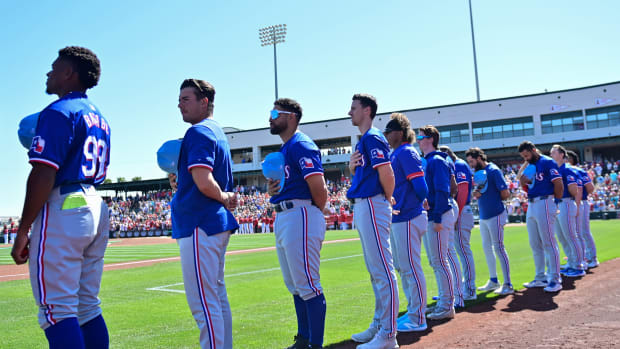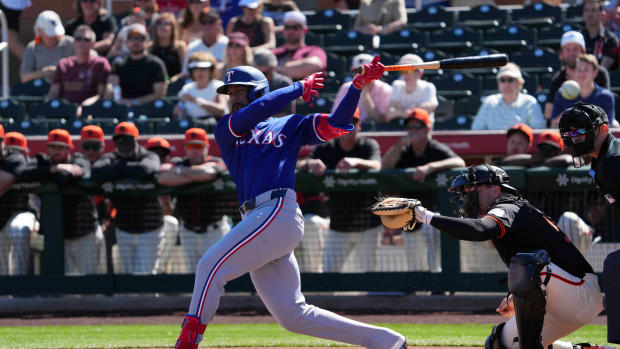Rangers Who Benefit From Shift Ban
On Friday night, the Toronto Blue Jays and Texas Rangers shortstop Corey Seager demonstrated perfectly what WON’T happen in 2023.
Seager came to the plate in the top of the first inning and the Blue Jays defense did what most defense do against the left-handed power hitter — it shifted. Two fielders ended up on the first-base side of the infield. One remained on the third-base side of the infield. One of the infielders settled into a spot in right-center field.
The Blue Jays were arranged in a way in which they had four outfielders and the majority of its fielders on the side where Seager normally pulls the ball. Well, Seager went opposite field. But because there were four outfielders, Blue Jays center fielder George Springer made a relatively easy play in left-center field.
Next year, that might be a double for Seager, thanks to the rules changes announced by Major League Baseball on Friday.
Foremost among the changes is the elimination of the shift.
The shift — a fielding trick in which teams align three or more fielders on one side of the infield — will no longer be allowed starting next season. In 2023, teams will be required to have two infielders on either side of second base. Teams also won’t be allowed to move their best fielder to either side of the field, depending on the quality of the hitter. A misalignment of fielders can result in an automatic ball or the result of the play.
Now, that part of the rule wouldn’t have helped Seager on Friday night. But the other part of the rule will. It also prohibits four-outfield alignments like the one that he faced on Friday.
Baseball wants batting averages to improve. Averages league-wide have dropped 10 points overall since 2006.
Rangers interim manager Tony Beasley said that players will adjust to the new rules. But who will benefit the most from the prohibition of the shift?
The data suggests that Seager may benefit the most of any player in the Majors.
According to SIS Baseball, Seager has a .160 batting average on the 175 grounders or short line drives that he’s hit against the shift this season. Their estimate suggests that Seager has suffered a net loss of 26 hits, the most in baseball.
As a reminder, Seager is hitting .247 entering Saturday’s game. Add those 26 hits to his current numbers and his batting average goes up to .297.
MLB Random Stats took it a step further and ranked the seven players that lost the most outs to ground balls or line drives into shifts. Their numbers are different, but Seager still tops the list at 90. No. 7 is his teammate, Marcus Semien, who the data estimates has had 61 outs to the shift.
Some players will benefit more than others from the elimination of the shift. The Rangers invested a half-billion dollars in Seager and Semien last offseason.
The elimination of the shift can’t come soon enough for the Rangers’ 1-2 offensive punch.
You can find Matthew Postins on Twitter @PostinsPostcard
Catch up with Inside the Rangers on Facebook and Twitter.






